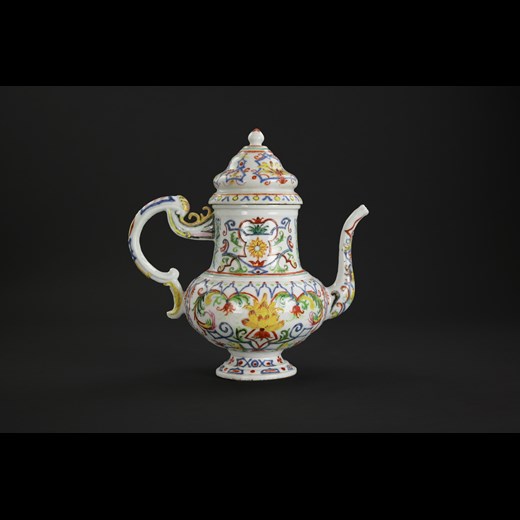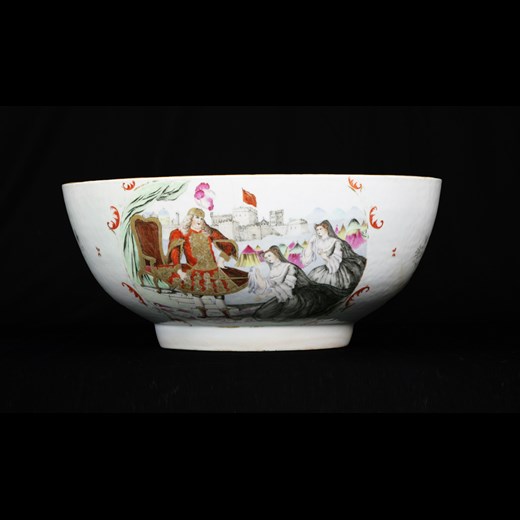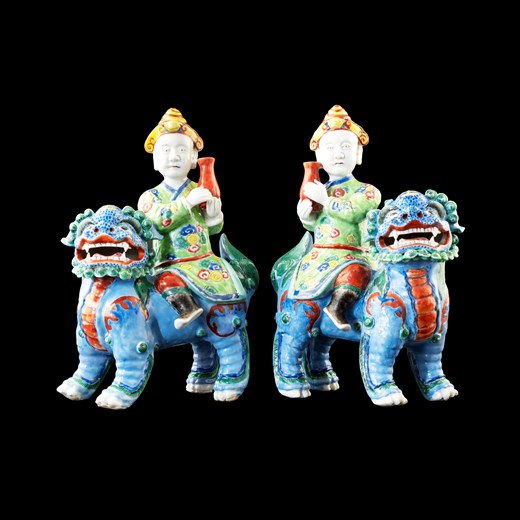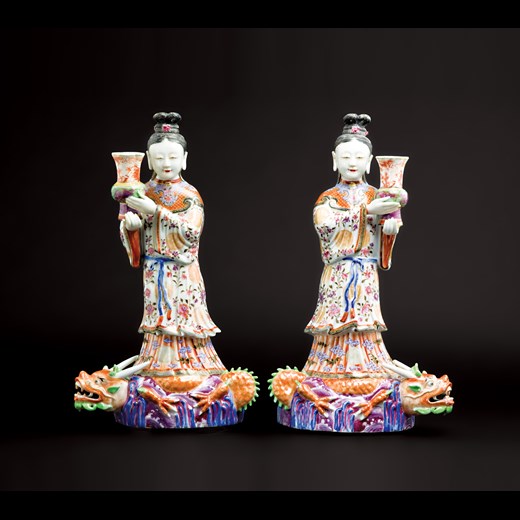What are you looking for?
searchChinese export porcelain Coffee Pot with Don Quixote
Chinese export porcelain Coffee Pot with Don Quixote
Qianlong period circa 1745$16,000
Qianlong period circa 1745
English Market
Height: 8¾ inches; 22cm
from the Golden Gate Collection, GG917
Priced in US dollars
$16,000
This item is located in the USA in the state of California. Shipping from there is at the buyer's expense. Please enquire if you would like to know more.
A rare Chinese export porcelain famille rose coffee pot and cover with a scene depicting Don Quixote putting on a barber’s bowl as the Helmet of Mambrino, after an image by Charles-Antoine Coypel (1694-1752) originally for the Gobelins tapestry factory.
This pattern is one of the most sought after by collectors of European subjects on Chinese export porcelain. The traditional view is that there were two services, the first about 1745 and a second about 1750. There are significant differences between the two versions and the dating has always followed the idea that the earlier one is more detailed with finer quality enamels and the later one has been reduced somewhat. However there is no direct evidence for this.
In fact a closer analysis of different examples of this pattern suggests three services and a different dating sequence.
The first (A) would appear be a teaservice, painted as here in excellent quality and including the pony, Dapple to right of the figure of Sancho, but lacking the fleeing figure in the background (his blue horse remains) - though a teapot from this service illustrated in Willamson (1970) spreads out the composition and does include this figure. This dates to around 1745-50.
The second (B) is a service of table flatware, dinner plates and meatdishes, very close in date to the teaservice, the composition lacking Sancho’s pony or any fleeing figure and his horse. Pieces from this service have a border with four Meissen style cartouches containing grisaille landscapes and birds, a rim very similar to the Scotsmen plate (circa 1745).
The third (C), of dinner plates and chargers only, is the rarest and best quality. It includes all the elements of the original print and has very different enamels, thicker and in an unusual palette. The border consists of gilt flowers and edging and the cavetto has a chain border. This last is very diagnostic as it is used to date pieces from about 1755 onwards, most commonly around 1760. In Howard’s two books on armorial porcelain the earliest pieces with this border date to 1755.
Although a decrease in quality with time is usual, it is not always the case. The borders suggest otherwise. It is possible that the print was sent to Canton to be copied onto a service, initially a teaservice. The success of this first order could have prompted another order of larger pieces. The image is complicated and the Chinese artists could easily have decided to simplify bits that did not make sense to them. Such a reduction in so famous a story would have been noticed immediately by the customer back home.
So then a supercargo with a later order would have been careful to get it right and it might have been placed with a specialised enamelling workshop that was producing very fine European subject images. An example of this is seen in the small hunt bowl (Cohen & Cohen 2008, No35) which is of much better quality than earlier punchbowls using the same James Seymour image. And the colours in that bowl are also distinctive and similar to those in the third Quixote service (C).
The scene shows the figure of Don Quixote on his horse Rosinante as he is placing a basin over his head, beside him is his faithful squire Sancho Panza with his pony Dapple and on the other side are two women behind a tree.
In this episode Quixote has encountered a barber who is holding a basin over his head to shelter from the rain (the woman on the left appears to be sheltering herself with her cloak too). With his characteristic ability to conjure up heroic adventures out of the mundane, Quixote has assumed the basin to be the Helmet of Mambrino, a legendary possession of a Moorish King, made of pure gold and rendering the wearer invulnerable. It was the goal of many of the Knights of Charlemagne to find it, not dissimilar to King Arthur’s Knights searching for the Holy Grail. Quixote commands the astonished barber to give him the helmet and, thinking he is mad, the barber drops it and flees. The story is popular and emblematic of all that Quixote represents.
References: Howard & Ayers 1978, p345, No 342, a dinner plate service B; Lloyd Hyde 1964, plate XV, p15, service C; Buerdeley 1962, Cat 33, service C (dated 1755); Williamson 1970, pl XXIV, a teapot, service A; Cohen & Cohen 2013, p72, No 49, a meatdish from service B; Brawer 1992, p108, a plate B.
You may also like
Chinese export porcelain Punchbowl with James Quin as Coriolanus
Qianlong period circa 1755-65£25,000
Pair of Chinese export porcelain famille rose Dinner Plates with European subject
Qianlong period circa 1745£3,000
Pair of Chinese export porcelain wall mounting candlesticks modelled as maidens
Qianlong period circa 1760$44,000










